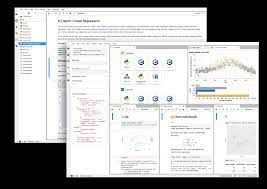Teaching In 2021
Contents
Teaching In 2021#
I will be teaching Programming Languages and Machine Learning. I have taught both courses many times in the past. But due to COVID, both courses will be offered 100% online. In this article, I will write about the challenges and opportunities with online teaching, and offer some advice to students to optimize their learning experience.
Challenges With Online Teaching#
Due to the lingering effects of COVID, I will be teaching both courses 100% online. Having had two semesters worth of experience of conducting virtual lectures, tutorials and office hours during the COVID lockdown, I am at least familiar with the challenges and opportunities with online teaching (and learning).
Note
Online education is not easy, neither for the instructors nor the students. Adjustments and adaptions are necessary to cope with the novel aspects of virtual classrooms.
It’s crucial that students achieve the same or higher level of learning experience at the end of the semester.
Attendance of synchronous online lectures#
 Since online lectures are digitally encoded and transmitted as data in video formats through the network across vast distances, it only makes sense to record the lectures. Having the recordings available to students after the official lecture hours create interesting and unintended consequences to students’ attendance behaviour.
Since online lectures are digitally encoded and transmitted as data in video formats through the network across vast distances, it only makes sense to record the lectures. Having the recordings available to students after the official lecture hours create interesting and unintended consequences to students’ attendance behaviour.
Many students choose to redesign their own schedule by skipping the official lecture time all together, and watch the lecture recordings at their own convenience. It’s too early for me to have a strong opinion about whether skipping virtual synchronous lectures is harmful or not, but as an instructor, I think we should be accutely aware of the attendance issue, and actively discuss its impact on the overall learning outcome of the curriculum.
Modes and surface area for presentation#
 I’m willing to debate with anyone that the single greatest pedagogical technology for STEM education is the physical blackboard. Blackboards (not to be confused with the company blackboard.com) have gone through many important iterations: flipping stands, sliding tracks, and pulley systems. Throughout my own university education, I have seen countless masterful presentations of deep ideas on the blackboards through visualization and real-time storytelling by the means of handwritten diagrams and mathematical expositions.
I’m willing to debate with anyone that the single greatest pedagogical technology for STEM education is the physical blackboard. Blackboards (not to be confused with the company blackboard.com) have gone through many important iterations: flipping stands, sliding tracks, and pulley systems. Throughout my own university education, I have seen countless masterful presentations of deep ideas on the blackboards through visualization and real-time storytelling by the means of handwritten diagrams and mathematical expositions.
It’s very difficult (but not impossible) to convey ideas at the blackboard quality in the digital world. Slides (Powerpoint, Keynotes, Google Slides) are just not enough when the content becomes deeply technical. Also, I am not aware of any great digital animation authoring tools that can match the expressiveness and speed of writing on a blackboard. Finally, the space commodity over video conferencing (1024x960) is totally inferior to the vast expanse of blackboards in lecture halls that span over several square meters.
Opportunities#
Challenges and opportunities go hand in hand. Online teaching brings a whole range of great potentials to create new and innovative modes of higher education. Such opportunities are rather difficult to spot because we don’t have the benefit of 20-20 hindsight. But with the limited experience we have been accumulating with virtual classrooms, I can share with everyone some potential areas for educational innovation.
The power of technological amplification#
 How is it that Facebook only has a few thousands of employees with it reached global domination in social networking? How did Instagram have only a few dozen of engineers when it was acquired for over 1 billion dollars? The key is the underlying technological innovation and the associated exponential amplication effects.
How is it that Facebook only has a few thousands of employees with it reached global domination in social networking? How did Instagram have only a few dozen of engineers when it was acquired for over 1 billion dollars? The key is the underlying technological innovation and the associated exponential amplication effects.
The same technological amplification has already been observed in higher education with success stories from Udacity, Coursera, EdX and many other tech training startups. Through online lecturing, I personally have found tremendous opportunities to develop and innovate technical solutions to deliver content to my students so that my lectures and assignments can horizontally scale up to a level far beyond the traditional brick-and-mortar classrooms.
Interactive digital environment and experiential learning#
 Students naturally need to be immersed in a totally digital and interactive learning environment. Exciting technologies such as cloud computing and interactive programming platforms allow new ways instructors can author educational content. The feedback cycle in formative assessments can be reduced from days to seconds. Students can enjoy experiential learning by rapid iterations of action, experiencing, reflection and thinking.
Students naturally need to be immersed in a totally digital and interactive learning environment. Exciting technologies such as cloud computing and interactive programming platforms allow new ways instructors can author educational content. The feedback cycle in formative assessments can be reduced from days to seconds. Students can enjoy experiential learning by rapid iterations of action, experiencing, reflection and thinking.
Collaborative teaching#
It’s been long recognized that social engagements and group activities are essential ingredients of a great learning experience. But to my knowledge collaborative teaching is rarely discussed, and has historically been limited to co-teaching different sections of a course, or one-off guest lectures. I imagine collaborative teaching hasn’t been a thing because of practical hurdles such as scheduling, human cost, and lack of necessity. In a digital environment, many of these issues are diminished or disappear all together. In my opinion, it makes a lot of sense to explore courses taught by a network of experts, and the curriculum is made up by a well curated collection of content from different sources.

 I believe in the value of presentating ideas and knowledge based on polished monologues. Thus, I consciously separate lectures and group activities. Usually, tutorials and labs hours are allocated for the later. In a virtual environment, it’s much more challenging to design engaging and effective learning experience. In my personal opinion, despite the impressive progress in real-time communication tools (e.g. Google Meet, Facetime, Zoom), we are still in a technology deficient when it comes to collaborative software. The traditional ad-hoc jam session involving students partnering up sponenteously while working face-to-face is quite still some years ago.
I believe in the value of presentating ideas and knowledge based on polished monologues. Thus, I consciously separate lectures and group activities. Usually, tutorials and labs hours are allocated for the later. In a virtual environment, it’s much more challenging to design engaging and effective learning experience. In my personal opinion, despite the impressive progress in real-time communication tools (e.g. Google Meet, Facetime, Zoom), we are still in a technology deficient when it comes to collaborative software. The traditional ad-hoc jam session involving students partnering up sponenteously while working face-to-face is quite still some years ago.